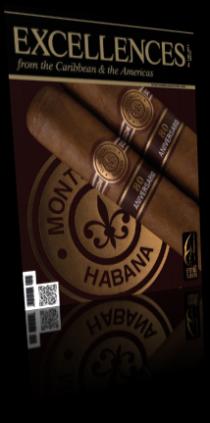- MONTECRISTO A HABANO COUNT.
HALF A DOZEN SWORDS MEET IN THE MIDDLE; AN UNFINISHED EQUILATERAL TRIANGLE; A FLEUR-DE-LIS, A SYMBOL AND A NAME. IT’S NEITHER WAR NOR SEMIOLOGY. IT’S A BRAND, A GOOD KEEPSAKE, A HABANO
Half a dozen swords meet in the middle; an unfinished equilateral triangle; a fleur-de-lis, a symbol and a name. It’s neither war nor semiology. It’s a brand, a good keepsake, a habano
Today, they are known as the best cigars worldwide, the bestselling and most copycatted of all. They boast their unmistaken light brown, somewhat oily wrapper, coupled with a very exclusive spicy taste.
Its history is both legendary and mystical. It harks back to the 19th century when The Count of Montecristo novel, by celebrated author Alejandro Dumas, was making the rounds among cigar makers in Havana. Cashing in on the work’s acclaim and the commercial benefits derived from the fact of using that name for the tobacco industry at the time, Jose Marati and Jose Valdes, two businessmen from the sector, decided to launch two new brands. The former registered it as El Conde de Montecristo on 19 Calle del Medio, in the province of Matanzas, while the latter entered his as Montecristo on Obispo Street, in Old Havana.
Both registries are known as the most remote antecedents of habano brands that were named after this universal literature classic. Nonetheless, they apparently had nothing to do with the one that popped up a century later in Havana and was also called Montecristo.
That came to pass in 1935 with the creation of the H. Upmann-Montecristo brand by Asturias-born Alonso Menendez and Jose Garcia, under the tobacco company they both founded. The new production included five consecutively numbered vitolas. Intentionally, the owners used the first name to indicate the prestigious factory where the Montecristo cigars used to be rolled.
A year later, they approached British company Stanley Phillips to introduce that new habano brand in Great Britain. Even though the idea snared Phillips, a major hurdle stood in the way: in England this brand was in the hands of a competitor, Germany-based firm Frankau & Co. To eventually cut the deal, the decision to drop the factory name was made, thus leaving only the word Montecristo. It was known just like that from that moment on, becoming extremely popular beyond the national borders shortly after that.
Phillips told his own nephew, Jack Benjam –he was at the time one of the directors of Hunter- to map out a strategy to introduce the new brand in Great Britain and the United States, where distribution spread like a prairie fire. Even during World War II, the U.S. panned out to be a much larger market at a time when habano imports from Cuba to the UK were banned.
The so-called Menendez, Garcia y Cía. Ltd partnership put out all the stops to clinch the brand’s excellence, not only relying on the finest tobacco leaves. Word has it the leaves for filler used to be aged in special cabinets made of cedar.
During the early 1950s, Montecristo was already a top-of-the-line premium brand, pushing significant figures in terms of habano sales and exports into the early 1960s.
Following the establishment of the new El Laguito factory in 1969 –it was already producing the Cohiba brand- three vitolas were added: Especial No.1, Especial No. 2 and Joyitas. By 1971, the Montecristo A and B vitolas jumped on the bandwagon. Montecristo A quickly made history as the “most expensive habano”, according to the Guinness Book of World Records. Later on, other models that enhanced the brand’s vitola portfolio were added.
Today, the brand grows on and awes smokers with new formats and lines that come increasingly closer to the habits and demands of contemporary lifestyles. Its band now shines with the noblest golden hues and there’s no habano smoker who fails to pick it time and again to puff on the miraculous blend a Montecristo has to offer.
Montecristo’s worldwide success made its name synonymous of a top-of-the-line habano in the market






























